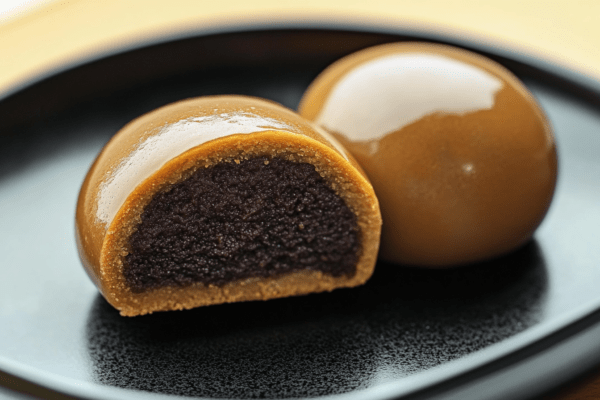7 Secrets of Traditional Japanese Kokoro Care Guide 🍵(こころ)
Japanese Kokoro , which translates to ‘heart’ or ‘spirit,’ embodies the essence of heartfelt care deeply rooted in Japanese culture. Through tea time rituals and traditional snacks, this practice fosters connection, gratitude, and inner peace.
🌸Table of Contents
Why Tea Time Snacks Matter in Japanese Culture? ☕🌸
In Japan, tea time isn’t just about sipping matcha or sencha—it’s a cherished ritual that nurtures both the body and soul (kokoro ). Paired with delicate snacks, this moment of pause becomes an opportunity to connect with oneself, nature, and others. Whether you’re hosting a small gathering or simply treating yourself, traditional Japanese tea time snacks offer a delightful way to embrace mindfulness and cultural heritage. Let’s dive into some timeless favorites that embody japanese kokoro care (heartfelt care).
What Are Traditional Japanese Tea Time Snacks? 🍡🍵
Japanese tea time snacks, known as okashi , are designed to complement the subtle flavors of green tea. These treats often feature natural ingredients like rice flour, sweet beans, and seasonal fruits, reflecting Japan’s deep connection to nature and simplicity. Here’s why they’re special:
- Balance: Sweetness balances the earthy bitterness of tea.
- Seasonality: Many snacks highlight fresh, seasonal produce.
- Craftsmanship: Each bite reflects artistry and attention to detail.
Top 5 Traditional Japanese Tea Time Snacks 🍥
1. Wagashi – Artisanal Sweets 🎌
- What it is: Handcrafted confections made from ingredients like glutinous rice flour, red bean paste, and agar.
- Why we love it: Wagashi often mimics the beauty of nature, such as cherry blossoms or autumn leaves. It’s not just a snack—it’s edible art!
- Pairing tip: Serve with matcha for a classic combination.
2. Mochi – Chewy Rice Cakes 🍙
- What it is: Soft, sticky cakes made from pounded glutinous rice, often filled with sweet fillings like kinako (soybean powder) or anko (red bean paste).
- Why we love it: Its texture is comforting, and its versatility knows no bounds—sweet or savory, warm or cold.
- Pairing tip: Try yomogi mochi (made with mugwort) for a fragrant springtime treat.
From soft mochi to intricate wagashi, these snacks are more than food—they’re an expression of omotenashi , the spirit of hospitality. Seasonal snacks like wagashi and sushi rely on perfect rice, a key part of Japanese cuisine. For tips on fixing sticky grains, check out this simple 3-step guide .
3. Manju – Steamed Buns 🍠
- What it is: Small buns typically filled with sweetened red bean paste, though modern versions may include chestnut, chocolate, or even cheese.
- Why we love it: The pillowy exterior and rich filling make manju irresistibly satisfying.
- Pairing tip: Enjoy with hojicha (roasted green tea) for a cozy afternoon delight.
4. Senbei – Rice Crackers 🌾
- What it is: Thin, crispy crackers made from rice, often flavored with soy sauce, seaweed, or sesame seeds.
- Why we love it: Crispy and crunchy, senbei adds a savory contrast to sweet teas.
- Pairing tip: Perfect with genmaicha (brown rice tea) for a wholesome crunch.
5. Daifuku – Mini Mochi Balls 🍑
- What it is: Small, round mochi balls filled with sweet fillings like strawberries, mango, or ice cream.
- Why we love it: Bursting with flavor and fun, daifuku is a playful yet elegant choice.
- Pairing tip: Ideal with iced green tea on hot summer days.
The Art of Pairing Tea and Snacks 🍵
Choosing the right snack depends on the type of tea you’re enjoying. Here’s a quick guide:
| Tea Type | Best Snack Pairing | Why It Works |
|---|---|---|
| Matcha | Wagashi or Daifuku | Balances the strong, bitter notes of matcha. |
| Genmaicha | Senbei | Complements the nutty, roasted flavors. |
| Hojicha | Manju | Soothes the bold, smoky taste of hojicha. |
| Sencha | Mochi | Enhances the light, refreshing qualities. |
DIY Tea Time Snack Idea: Simple Anko Mochi 🍬
The art of tea time in Japan is a perfect example of Japanese Kokoro in action. Every sip of tea and every bite of wagashi is an opportunity to pause, reflect, and nurture the soul.
Ready to try making your own tea time snack? This easy recipe for anko mochi will get you started:
Ingredients:
- 1 cup glutinous rice flour
- 1/2 cup water
- 1–2 tablespoons sugar (optional)
- Red bean paste (anko) for filling
Instructions:
- In a bowl, mix the rice flour, water, and sugar until smooth.
- Microwave the mixture for 1–2 minutes, stirring halfway through, until it forms a sticky dough.
- Let the dough cool slightly, then divide it into small portions.
- Flatten each portion, place a spoonful of anko in the center, and seal the edges.
- Dust with powdered sugar before serving.
Serve warm with a steaming cup of matcha for an authentic experience!
Japanese Kokoro Care Tips for Hosting Tea Time 🍵🌸
- Create a Calm Atmosphere: Dim the lights, light incense, or play soft music to enhance relaxation.
- Use Seasonal Decor: Incorporate flowers, leaves, or colors that reflect the current season.
- Focus on Presentation: Arrange snacks beautifully on a tray or plate to show appreciation for the moment.
- Practice Gratitude: Take a moment to express thanks for the company, the food, and the simple joy of being present.
Health Benefits of Japanese Tea Time Snacks 🌱
Beyond their delicious taste, many traditional snacks offer health benefits:
- Rich in Fiber: Ingredients like beans and rice provide essential nutrients.
- Low in Added Sugars: Natural sweetness comes from whole foods rather than refined sugars.
- Mindful Eating: The slow, deliberate act of enjoying tea and snacks encourages mindful consumption.
Conclusion: Nourish Your Body and Soul 🧡
Traditional Japanese kokoro tea time snacks aren’t just about indulgence—they’re about fostering connections and finding peace in everyday moments. By incorporating these treats into your routine, you can practice japanese kokoro care and create meaningful experiences for yourself and loved ones. So brew a pot of tea, grab some wagashi, and let the magic unfold! 🍵🌸
FAQs: Answers to Common Questions 💡
Q: Can I buy ready-made wagashi online?
A: Yes! Many specialty shops and retailers sell authentic wagashi worldwide. Look for reputable sources offering fresh or vacuum-sealed options.
Q: Is there a non-sweet option for tea time snacks?
A: Absolutely! Savory snacks like arare (rice crackers) or umeboshi (pickled plums) pair wonderfully with green tea.
Q: How long do traditional snacks last?
A: Most handmade snacks should be consumed within a few days, while packaged varieties have longer shelf lives.
While Japanese Kokoro Care emphasizes mindfulness, it also embraces modern experiences like Harajuku’s vibrant street food culture. Discover how playful and creative snacks reflect Japan’s spirit with this Harajuku street food itinerary for 2025 .
Now that you know how to elevate your tea time with traditional Japanese snacks, it’s time to start planning your next japanese kokoro care session. Cheers to happiness in every bite! ❤️

